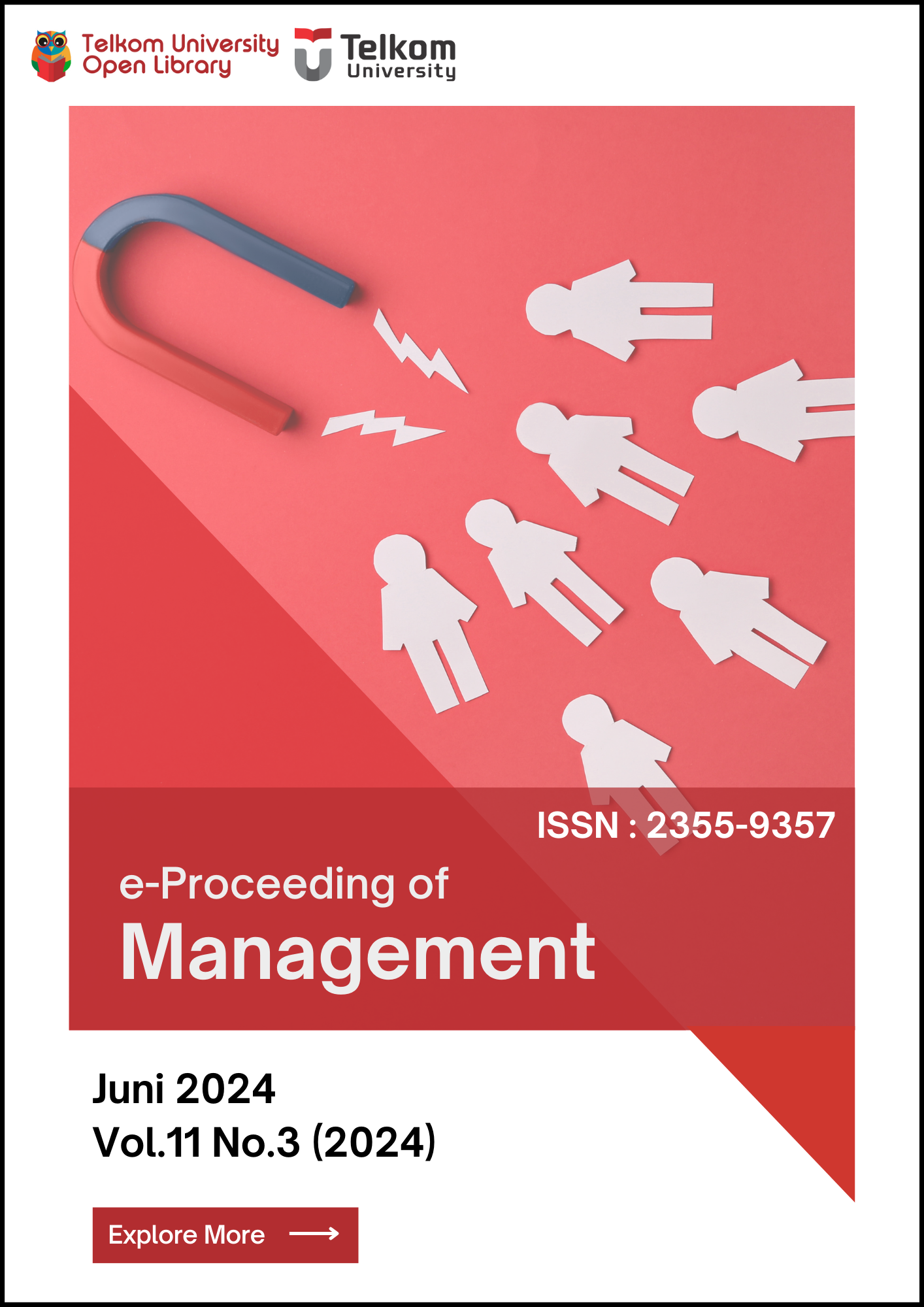Communication Barriers and Adjustment Strategies of Foreign Students: A Case Study Analysis in A Private University
Abstrak
The increasing demand for education has led to a rise in foreign students seeking global experiences. However, they
often face communication barriers in their home universities, including Telkom University. A pre-research interview
at Telkom University exposed a gap between foreign and local students, with little interaction concerning campus
organization and events. This study aimed to identify these communication barriers and examine their adjustment
strategies. The researcher used a qualitative method and case study methodology to analyze the issues faced by six
foreign students. The findings revealed five distinct communication barriers: assumptions of similarities, language
differences, non-verbal misinterpretations, preconceptions and stereotypes, and high anxiety. Factors contributing to
these barriers include cultural differences, media, personal beliefs/values, personal experiences, and historical
background. The students implemented a convergence strategy to address these barriers. The study highlights the need
for better communication between foreign and local students at Telkom University.
Keywords-foreign students, communication gap, communication barriers, adjustment strategies.
Referensi
Aida Niendorf, M. (2015).
(2012, 2nd ed.; 1st ed. 2007) New York: Oxford University Press. Pp. 326. ISBN 978-0-19-973979-0 (pbk).
Sociolinguistic Studies, 9(4), 507–514. https://doi.org/10.1558/SOLS.V9I4.27183
Anwar, R. (2018). Hambatan Komunikasi Antarbudaya Di Kalangan Pelajar Asli Papua Dengan Siswa Pendatang Di
Kota Jayapura. Jurnal Common, 2(2). https://doi.org/10.34010/common.v2i2.1190
Barna, L. M. (1994). Stumbling Blocks in Intercultural Communication. In Intercultural Communication : A Reader
(pp. 337–346).
Bennet, M. J. (2013). Basic Concepts of Intercultural Communication : Paradigms, Principles & Practices.
Bloom, N., & Reenen, J. Van. (2013). Non-Verbal Communications. In Routledge. Retrieved from
http://www.nber.org/papers/w16019
Creswell, J W. (2013). Qualitative Inquiry and Research Design: Choosing Among Five Approaches. SAGE
Publications. Retrieved from https://books.google.co.id/books?id=Ykruxor10cYC
Creswell, John W. (2013). Penelitian Kualitatif & Desain Riset : Memilih di antara Lima Pendeketan. In SAGE.
Retrieved from
https://www.researchgate.net/publication/232577017_Qualitative_Inquiry_Research_Design_Choosing_Amo
ng_Five_Approaches
Dewi, I. G. A. A. O. (2022). Understanding Data Collection Methods in Qualitative Research: The Perspective Of
Interpretive Accounting Research. Journal of Tourism Economics and Policy, 1(1), 23–34.
https://doi.org/10.38142/jtep.v1i1.105
Dragojevic, M., Gasiorek, J., & Giles, H. (2015). Communication Accommodation Theory. The International
Encyclopedia of Interpersonal Communication, (December), 1–21.
https://doi.org/10.1002/9781118540190.wbeic006
Evi, D. Z., Kusumaningputri, R., & Khazanah, D. (2022).
Language Anxiety in Academic Intercultural Communication Practices. JEELS (Journal of English Education
and Linguistics Studies), 9(2), 381–409. https://doi.org/10.30762/jeels.v9i2.534
Fang, X. (2017). When an Indian speaks to a Chinese: Making sense of world englishes in the framework of
communication accommodation theory. Asian Englishes, 19(2), 100–115.
https://doi.org/10.1080/13488678.2017.1292444
Gallois, C., & Giles, H. (2015). Communication Accommodation Theory. The International Encyclopedia of
Language and Social Interaction, 1–18. https://doi.org/10.1002/9781118611463.wbielsi066
Jones, A. ., & Draper, S. (2007). Intercultural Communication Helpsheet. Giblin Eunson Library, 10.
Kang, S., Yossuck, P., Panyadee, C., & Ek-lem, B. (2019). Influencing Factors of Cross-cultural Adaptation Process
of Chinese Students Studying in the Upper Northern Thai Universities. Mediterranean Journal of Social
Sciences, 10(1), 65–74. https://doi.org/10.2478/mjss-2019-0007
Karim, A. (2016). Komunikasi Antar budaya Di Era Modern. AT-TABSYIR: Jurnal Komunikasi Penyiaran Islam,
(2), 319–338. Retrieved from http://journal.stainkudus.ac.id/index.php/komunikasi/article/view/1650
Martin, J. N., & Nakayama, T. K. (2010). Intercultural Communication in Contexts.
Ouedraogo, A., & Bulut, S. (2022). Communication and Interaction Barriers among National and International
Students at the University Campuses. Ascepius, 4(1), 20–23.
Raco, J. (2018). Metode penelitian kualitatif: jenis, karakteristik dan keunggulannya.
https://doi.org/10.31219/osf.io/mfzuj
Rijali, A. (2019). Analisis Data Kualitatif. Alhadharah: Jurnal Ilmu Dakwah, 17(33), 81.
https://doi.org/10.18592/alhadharah.v17i33.2374
Sabre, A. A. M., & Mohandas, E. S. (2023). Analysis of Cross-Cultural Communication Challenges in the Movie
Outsourced9 (2006). European Journal of Social Sciences Studies, 9(3), 1–19.
https://doi.org/10.46827/ejsss.v9i3.1583
Shahzad, A., Yoenanto, N. H., & Nurdibyanandaru, D. (2020). Stres Akulturatif pada Mahasiswa Internasional di
Universitas Airlangga - Indonesia. Society, 8(1), 128–140.
Sugiyono. (2015). Metode penelitian kuantitatif, kualitatif dan kombinasi (mixed methods). In Bandung : Alfabeta.
Retrieved from https://opac.perpusnas.go.id/DetailOpac.aspx?id=853411
Sugiyono. (2017). Metode Penelitian Kualitatif.
Suheri. (2019). Akomodasi Komunikasi. Jurnal Network Media, 2(1), 40–48.
Talan, M. D. M., Sumarah, N., & Danadharta, I. (2013). Hambatan Komunikasi Interpersonal Mahasiswa Flores
dengan Mahasiswa Jawa Prodi Administrasi Negara di UNTAG Surabaya. Komunikasi, 47–72.






